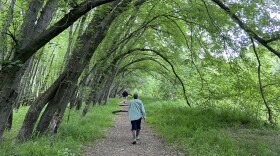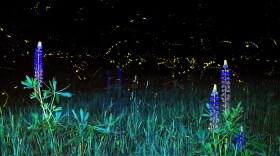
Chris Martin
Host, Something WildChris Martin has worked for New Hampshire Audubon for close to 35 years as a Conservation Biologist, specializing in birds of prey like Bald Eagles, Peregrine Falcons, and Northern Harriers.
Prior to that he climbed to eagle nests in Alaska's Katmai National Park, counted seabirds near the Aleutian Islands, coordinated Peregrine Falcon restoration at Lake Superior’s Isle Royale, and studied how a southern Indiana forest responded after a devastating tornado.
Since moving from the Midwest to New Hampshire in 1990, Martin has worked with colleagues at New Hampshire Fish and Game, the U.S. Fish and Wildlife Service, the U.S. Forest Service, and other agencies to recruit and train volunteer wildlife observers. He has advised electric utilities on how to provide safe nest sites for Ospreys, partnered with rock climbers to collect Peregrine Falcon eggs to monitor contaminants, and studied New Hampshire's only breeding population of American Pipits above treeline on Mt. Washington.
Martin received an Environmental Merit Award from the U.S. Environmental Protection Agency in Boston in 2006 for outstanding efforts in preserving New England's environment. “I love motivating folks to document what's happening with birds in the Granite State, and helping them hone their wildlife-watching skills. That's one of the reasons why contributing to Something Wild is so much fun.”
-
Succession is a natural process, even at Something Wild, as Chris Martin retires and we meet a new host.
-
A visit to a magnificent urban tree, the sycamore, to admire its unique characteristics and ecological role.
-
Gino Ellison spent a year trying to see as many birds as possible, and has advice for how you can create your own Big Year.
-
As part of Project Owlnet, the Something Wild team observed northern saw-whet owls being banded to learn more about their migration.
-
Acorns and other nuts get all the attention in a mast year, but berries and fruits — 'soft mast' — are equally important for wildlife and forest ecosystems.
-
The American Kestrel, a tiny, colorful raptor, is declining in the state, and the Harris Center for Conservation Education is installing nest boxes in hopes of bolstering local kestrel populations.
-
Ethan Tapper, forester and author of "How to Love a Forest," says the actions we must take to protect forest ecosystems are often counterintuitive, uncomfortable and even bittersweet.
-
They all sting, but you can figure out the differences in three common wasps by looking at their nests and how they overwinter.
-
Chris and Dave make some fairy houses and discover how important imagination is in connecting kids, and adults, with nature.
-
Here’s why the third wettest spring on record in New Hampshire has made for a firefly renaissance this summer.











